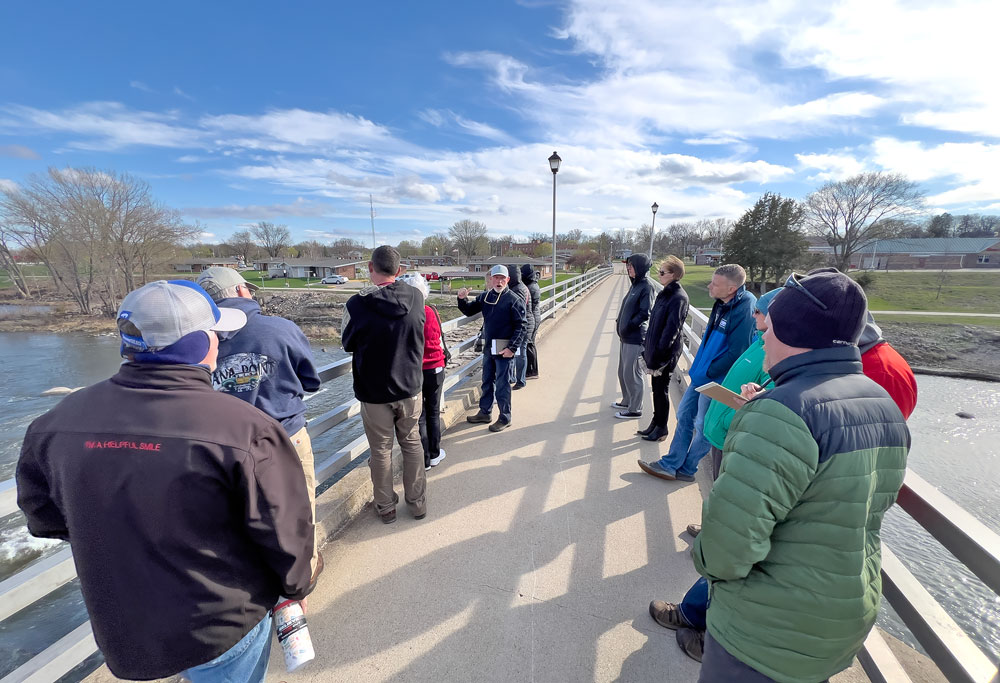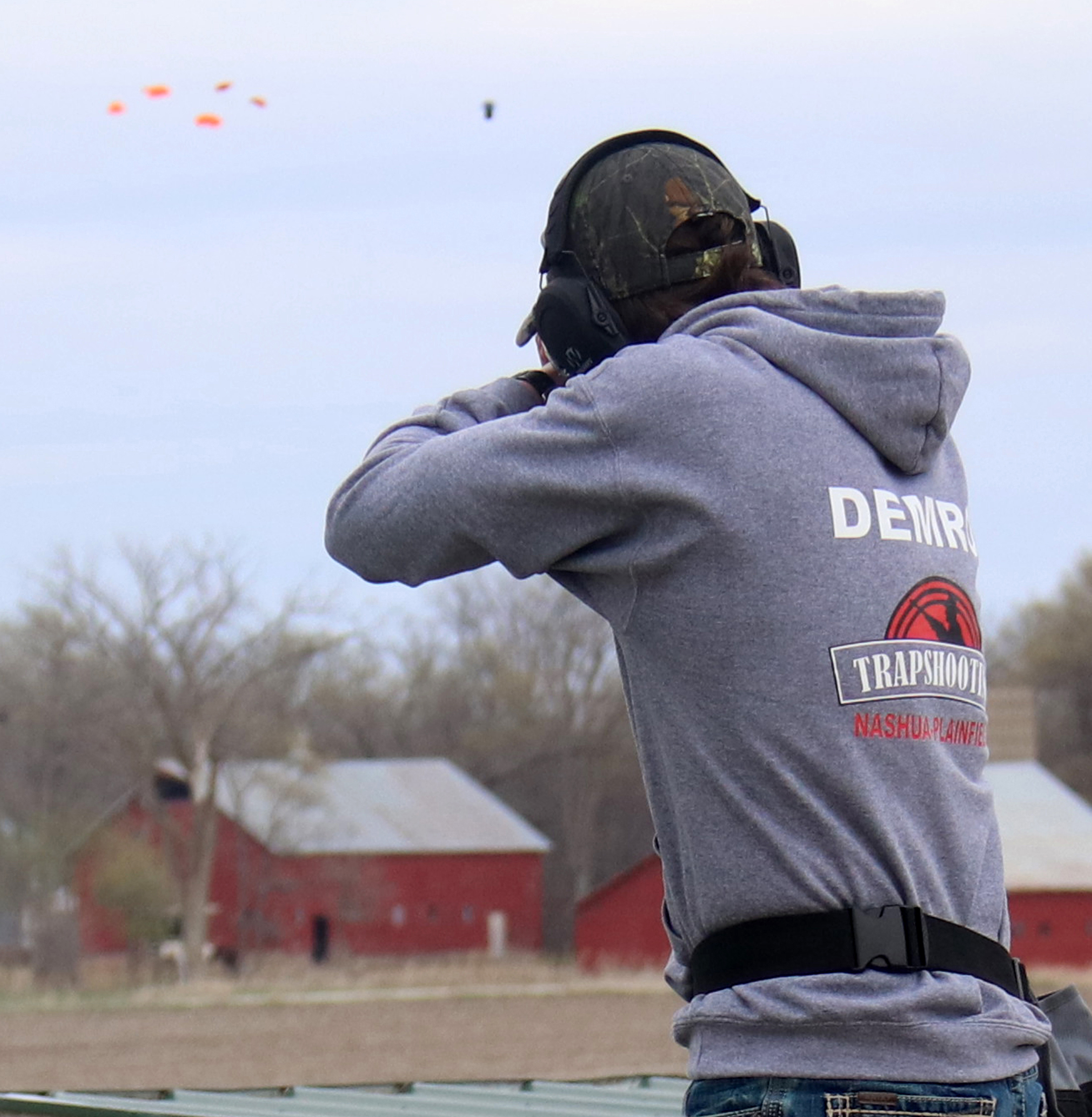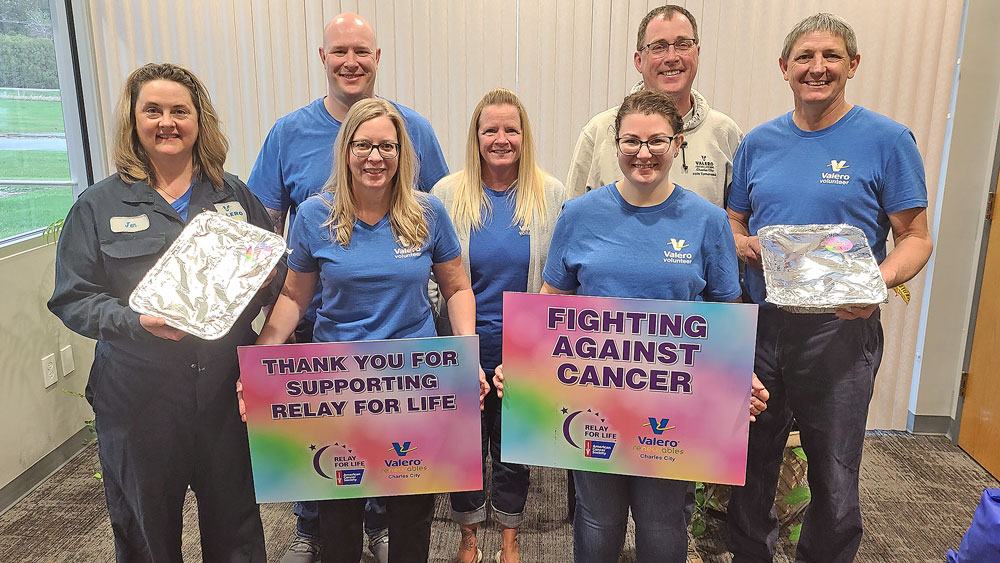EMERGENCY PREPAREDNESS: Fullerton always on call to help with disaster relief

By James Grob, jgrob@charlescitypress.com
Once a month, Jim Fullerton has to let someone know if he’ll be available to help sort out and identify dead bodies, if the need arises.
In his nearly 30 years as an intermittent mass fatality worker, Fullerton has worked the wakes of the World Trade Center, Hurricane Katrina, the Haiti earthquake, the Joplin, Missouri tornado, and most recently, Hurricane Maria in Puerto Rico — among many other disaster areas.
“My father was a Marine,” Fullerton said. “I was never in the military. This is my contribution to my country.”
Fullerton and other funeral directors work among forensic anthropologists, forensic dentists, fingerprint specialists, pathologists, computer and technical experts to run the morgues at disaster sites. They identify bodies, confirm identifications, and make sure those who died are properly returned to their families. Fullerton is usually one of over 100 people working the morgue.
“When you get a positive ID, it’s a really good feeling, because you know someone is going back to their family,” Fullerton said.
The families submit several pages of information about their lost loved ones to help with identification, and Fullerton and others in the morgue then use those clues to positively identify the bodies. The information Fullerton has to go on includes fingerprints, dental records, surgeries, tattoos, prosthetics, jewelry and clothing.
“We make IDs so that we can scientifically prove who a person is,” he said. “When we return that person to the family, they want to know how we were sure that it is, indeed, their family member.”
Fullerton has done his work in the aftermath of plane crashes, train wrecks, hurricanes, tornadoes, earthquakes, floods and terrorist attacks.
He said FEMA is divided into eight regions, and Fullerton typically is called to disasters in Region 7, which includes Iowa, Kansas, Missouri and South Dakota.
“Anything that happens in our region, we’re the first to go, because we’re the closest,” he said.
Fullerton explained that in the early 1990s, the National Funeral Directors Association started a program for mass fatalities, and he took the course. In the time since, the program has been put under the U.S. Department of Public Health and utilized for emergency disaster relief.
Fullerton is the owner and operator of the Fullerton Family of Funeral Homes, which presently has locations in Mason City, Charles City, Rockford, and Rockwell. The original funeral home was established in 1916.
He is a 1973 graduate of Rudd-Rockford-Marble Rock High School, attended college at NIACC, and earned his degree in Mortuary Science at the University of Minnesota.
His first disaster deployment came in 1994, when he was called to work with the Georgia Bureau of Investigation in Albany, Georgia, to help with cemetery flooding. He said that hundreds of bodies had been washed up in the flood and needed to be identified.
Fullerton said they had to fetch the vaults/caskets, open them, use the clues provided to help determine who was who, and then cross reference them with funeral home records and cemetery records. He said some of the bodies washed up had been buried 80-100 years before.
He told the story of how an anthropologist was having trouble identifying a body that had been in a casket for several years. The anthropologist was confused because the bones were male, but the body was clad in a dress.
“I told him to look for records of a ship from California,” Fullerton said. “It’s probably a transvestite who went to California, and was out there with all of his friends and his family here at home didn’t know. When he died, his friends dressed him the way they knew him and shipped him home, and when the family saw him, they shut the casket.”
As it turned out, the anthropologist discovered that was pretty much what had happened. He found the shipping records and was able to identify the body.
“He asked me how the hell I knew that,” Fullerton said. “I told him I was a funeral director, you look at bones. We have to rely on each other to get this done. It’s all teamwork.”
Fullerton said that when he went to the disaster sites after Hurricane Katrina and Rita in Louisiana in 2005, there were many caskets lost out to sea. However, coincidentally, some vaults that had been washed out to sea from Hurricane Audrey in 1957 — nearly 50 years prior — washed back in.
The Hurricane Katrina and Rita deployment was Fullerton’s longest — more than 90 days.
“The biggest problem there was that all the funeral home buildings were destroyed, and with them, all the records,” he said.
When the 9-11 terrorist attacks happened in 2001, Fullerton was called and put on standby that same afternoon.
He was told to pick up several others and drive down to Missouri, from where they would be flown to the Pentagon. They arrived in Missouri and waited a full day before being informed that they wouldn’t be needed at the Pentagon, so he went back home. Two weeks later, he was called again and dispatched to New York to help in the wake of the destroyed World Trade Center.
“You have to be ready for anything,” he said. “I have two go-bags already packed — one for warm weather and one for cold weather.”
The science and technology has improved substantially in Fullerton’s time. He said that 20 years ago it took 2-3 weeks for DNA results to come back. Now they usually are back in less than 24 hours.
Fullerton said that there is continual online and in-person training, and he’s logged thousands of hours. He’s also taught thousands of hours worth of classes and held seminars. He said he plans to keep doing it “until I can’t anymore.”
With all the advances in new science technology that help the work, Fullerton said that the institutional knowledge that comes with 30 years experience is still very valuable
“Sometimes they bring in someone who wants to get rid of all of us old farts and bring all young people in,” Fullerton said. “They find out that these old guys know what the hell they’re doing, they know the tricks. When something odd pops up, they know what it is, because often times they’ve seen it before.”







Social Share